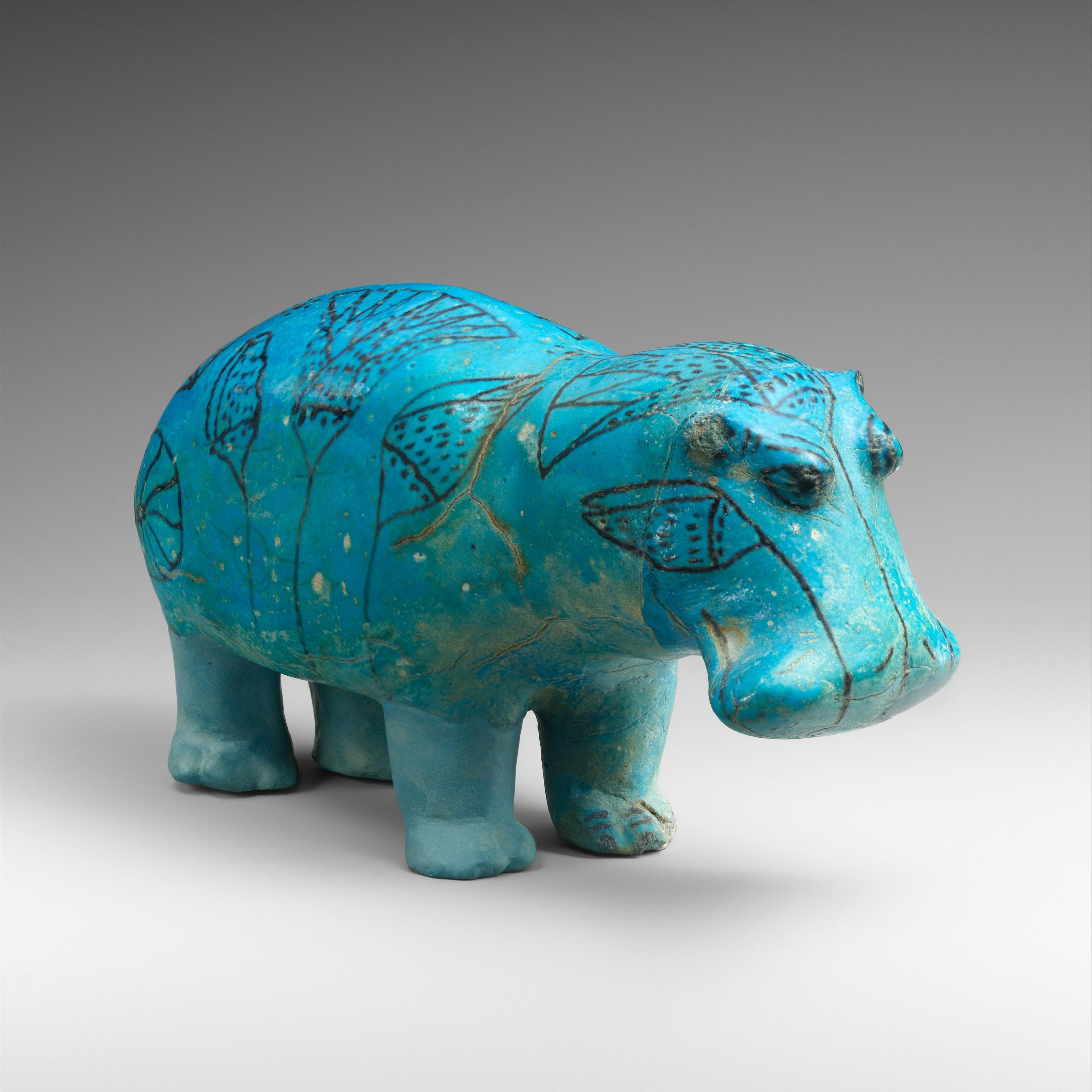William the Hippo: Celebrating 100 Years at The Met
In 1917, The Metropolitan Museum of Art acquired a small ancient Egyptian faience hippopotamus. Created in a captivating blue, the little hippo quickly won people's hearts. He received his now-famous nickname, William, in 1931. Today he is the informal mascot of the Museum, beloved by museum-goers around the world.
A 2017–18 display at The Met, Conversation between Two Hippos, celebrated the one hundredth anniversary of William's arrival at the Museum. In the installation William was juxtaposed with a ceramic hippo created about four thousand years later by the American artist Carl Walters and acquired by the American Wing in 2017.
You can explore different aspects of his life and story on this page.
Art
This statuette of a hippopotamus (popularly called "William") was molded in faience, a ceramic material made of ground quartz.
